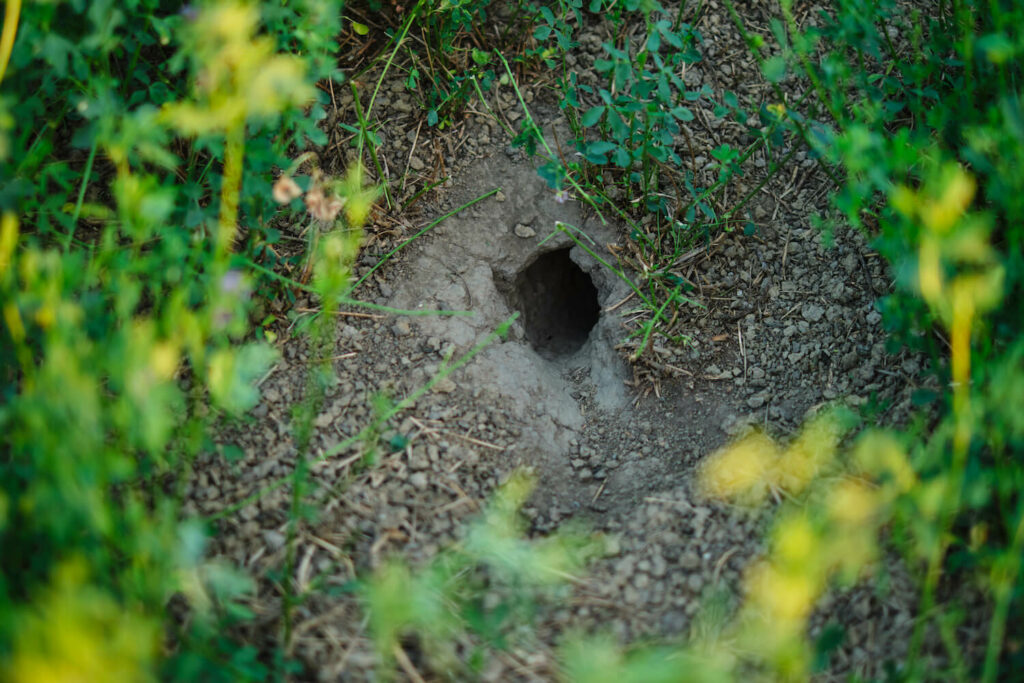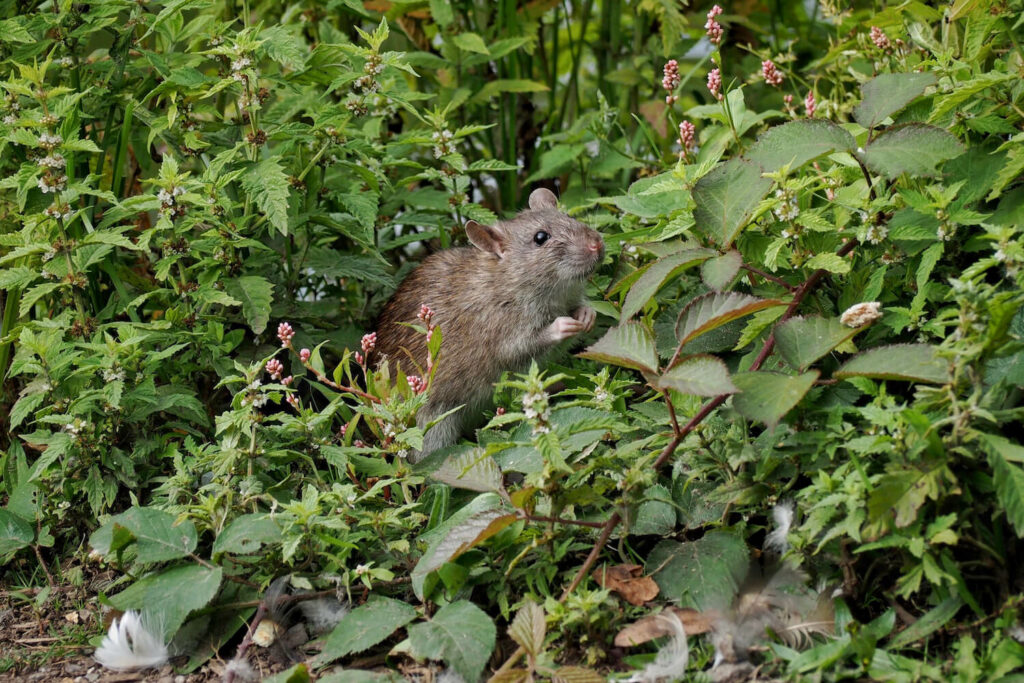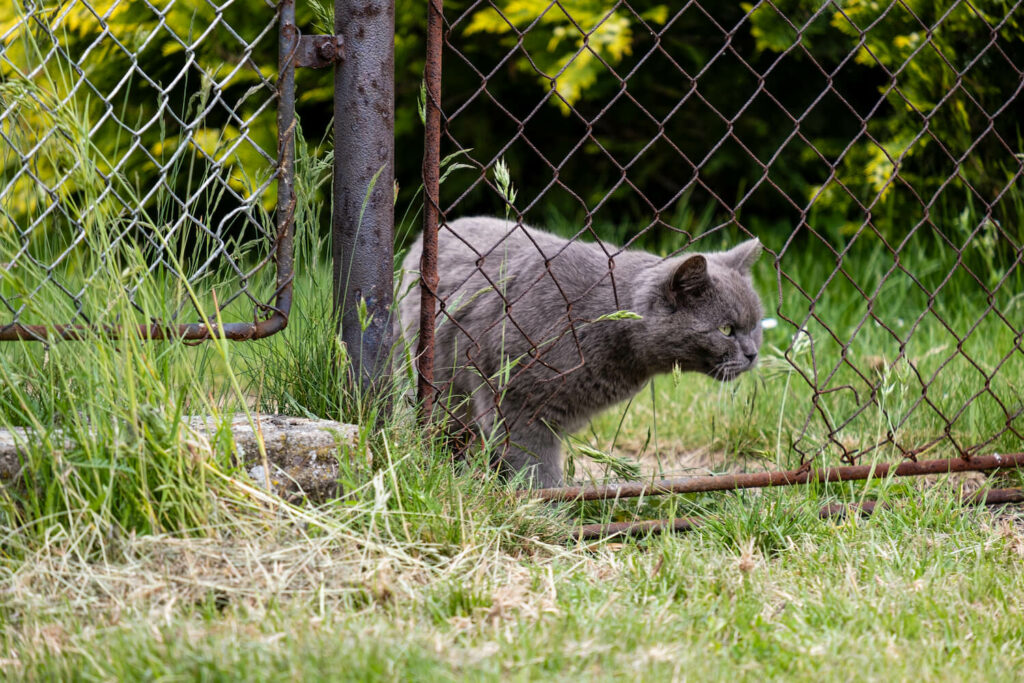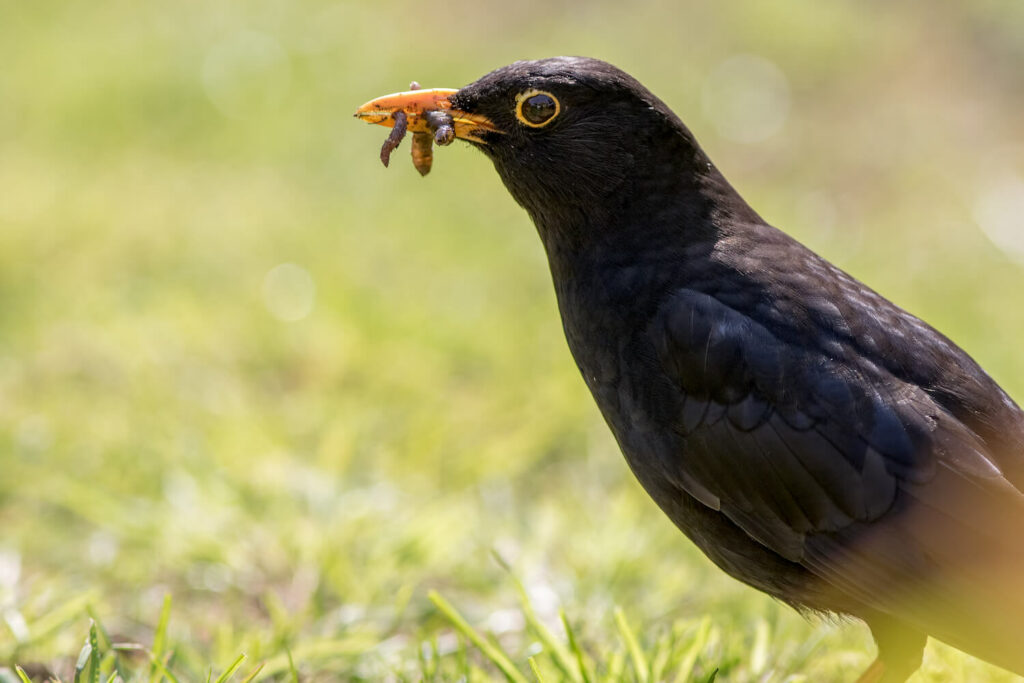Who does not know them, the unsightly holes in the garden. But which animal has been up to its mischief here? We present the most common garden visitors.

Gaps in the lawn do not always come from animals. Nevertheless, these often contribute to bare patches by burrowing or foraging. How you can recognize and drive away the culprit, you will learn here.
Contents
- 1 How to recognize which animals dig holes in the garden?
- 2 What animal is digging holes in the garden?
- 3 Rat holes in the garden
- 4 This is how you can recognize rat holes in the garden:
- 5 Mouse holes in the garden
- 6 Holes in the garden by raccoons
- 7 Hedgehog holes in the garden
- 8 Wasp holes in the garden
- 9 Holes in the ground due to birds
- 10 Holes in the soil caused by mole crickets
- 11 Author
How to recognize which animals dig holes in the garden?
Holes in the garden can have the most diverse causes. On the one hand, they can be caused by animals digging into the soil. On the other hand, animal feeding activities also cause holes in the lawn. To identify who or what is responsible for the holes, you should first consider whether the holes have developed over a long period of time or have appeared rather very suddenly. The latter usually speaks to animals living in the soil or foraging for food. The size, depth and frequency of the holes can be an indication of which animal it is. Last but not least, look at the area surrounding the burrow. Pay attention to whether there are piles of soil or what droppings can be seen. Ideally, you should simply observe the holes over a period of time or set up a photo trap to identify the culprit.
What animal is digging holes in the garden?
By closely inspecting and observing the holes, you can find out which animal it is and then take appropriate countermeasures.

Rat holes in the garden
Holes in the lawn caused by rats can be identified by their size and location. Rats dig larger holes than mice, ranging from 8 to 20 cm in diameter. The holes like to be in compost or under stone slabs and tree stumps or trunks. These lead vertically into the ground. Rats also leave behind spindly, shiny droppings. If you have a rat infestation or suspect one, you should contact the Ordnance Department. Cloths soaked in turpentine that you lay out in the garden are suitable for driving them away. In addition, hot spices such as pepper or chili powder can be spread on walkways or in front of holes. Used cat litter can also help to drive them away.

This is how you can recognize rat holes in the garden:
- Round hole (8 – 20 cm in size)
- No pile of earth
- At dusk, rats can often be observed running around
Mouse holes in the garden
Mouse holes in the garden are not uncommon. Causers can be shrews or voles, sometimes field mice. Unlike the shrew and field mouse, the vole holes usually have a pile of soil next to them. These tend to be small and flat, unlike the mole’s larger and rounder mounds. The droppings of mice look very similar to those of rats, but are smaller. While shrews are welcome guests in the garden because they eat pests, voles can cause great damage. Field mice – unless they occur in masses – usually do not need to be controlled.
The tunnels of the mice run shallowly below the surface of the soil. Roots of fruit trees or vegetable plants are eaten down to just below the soil surface, resulting in puny growth. Again, scents can be used to drive them away. Garlic, for example, is not at all liked by mice. But also the above-mentioned rat remedies help against a mouse infestation. If the expulsion measures do not work, there are other ways to control voles.
Attention: Some species of shrews are specially protected and must not be killed.
This is how you can recognize mouse holes in the garden:
- Oval opening with a passage behind it
- Shrews and field mice: About 2 – 5 cm in size
- Voles: With a flat pile of earth
Tip – resealing holes in the lawn: Although some holes in the soil also indicate visitors that are useful and eat pests, the lawn should look uniform again afterwards. Once the culprits have been driven away, you can spruce up your lawn. To fill in the gaps, for example, our Plantura Lawn Repair is a good choice. The high-quality mixture consists of lawn seeds of various grasses, organic lawn fertilizer, growing medium and lime, so that the lawn can grow quickly and densely. Loosen the soil in the gaps and remove weeds if necessary. Apply Plantura Lawn Repair to the area and keep the soil moist. In this way, a gap-free, lush green lawn will be created again in no time.
Holes in the garden by raccoons
Raccoons don’t really dig holes or even underground tunnels, but instead dig up the ground to find food. Therefore, scratch marks are often found around the depression in the lawn. If the raccoon is in your yard for an extended period of time, be sure to make possible food sources such as garbage cans or fallen fruit inaccessible to them.
How to spot raccoon holes in your yard:
Churned up depression
Very superficial
Scratch marks
Hedgehog holes in the garden
Holes in the lawn caused by hedgehogs occur when foraging for food. The hedgehog searches for food in the ground, digging up the soil, which can create funnel-shaped holes in the garden. This is usually a one-time occurrence. In addition, some pests are on the hedgehog’s menu. What remains are shallow depressions and small holes, which, however, can easily be filled up again by sowing turf.
This is how you can recognize hedgehog holes in the garden:
- Funnel-shaped
- More of a depression than a hole (about 2 cm in size)

Wasp holes in the garden
Wasps leave holes of about 1 cm in the lawn. These are usually not particularly disturbing, but can be dangerous if you enter the garden barefoot. To take action against aardvarks, it is best to ask professionals for help. Some wasp species are even protected. In the fall, you can seal the wasp hole to prevent them from moving in next year.
This is how you can recognize wasp holes in the garden:
Round hole (about 1 cm in size).
Much visited

Holes in the ground due to birds
Birds can also leave burrows in the garden. These are usually about 2 cm in size and, like hedgehogs, are caused by foraging. If you hang bird feeders, you can lure the birds away from the lawn.
This is how you can recognize bird holes in the garden:
About 2 cm in size
Distributed over a large area

Tip: Birds especially like to burrow in the lawn when there are grubs or earthworms underneath. If they cause great damage in the garden, earthworms and grubs can be controlled. Learn how to do this successfully in our articles on earthworms and on grubs in the lawn.
Holes in the soil caused by mole crickets
If there are several small, round holes in the lawn or bed that are smaller than 1 cm, they may be mole crickets. Fist-sized bare patches usually appear next to the holes. This is where the nests are located underground. The roots of the grasses are eaten by the insects and die above ground. However, if there is no large infestation, mole crickets do not do much damage and do not need to be controlled. They also eat pests and are therefore quite useful. Unfortunately, mole crickets are becoming increasingly rare, especially in northern Europe.
This is how you can recognize mole cricket holes:
- Smaller than 1 cm
- Bare spots in the lawn
- Eaten roots in the bed
Holes in the garden caused by other animals
There are several other animals that can cause holes in the garden. Most of the time, however, the visitors disappear all by themselves or do not cause too much damage. Many animals are sensitive to smells, light or noise and can be driven away.
Fox: Several large holes in the ground can be entrances to a fox’s den or can also serve as hiding places for prey or food.
Rabbits: Occasionally, a wild rabbit may stray into the garden and leave larger holes.
Ant lions: The small larvae of the ant lionfly, a pretty dragonfly, dig small funnels in sandy soil to catch prey.
Cats: Domestic cats also sometimes dig holes in the ground and bury their droppings there. However, with the help of suitable cat deterrent methods, you can easily drive away the four-legged friends.

Lawn damage can occur not only from animals, but also from maintenance mistakes or drought. Here you can learn how to mend and repair your lawn.

